hydrogen safety valve manufacturer

A pressure relief valve prevents a predefined pressure from being exceeded. When the pressure is exceeded, the valve opens and the excess pressure is released and the medium is discharged. The pressure relief valve is activated without auxiliary energy and is triggered purely by the medium.
A pressure relief valve is used to protect a system as a last safety instance. In the case of systems requiring approval or systems that fall under the European Pressure Equipment Directive, for example, corresponding tests and approvals are required for the valves.
Even though each series differs in the field of safety valves, the main components of each valve are similar. The optimal design of the component geometry is ensured by flow simulations and elaborate function tests.
When at rest and installed on the system in normal operation, the force of the pressure spring is greater than the medium force, whereby the valve is closed and seals to the outside.
On the one hand, hydrogen is a colourless, odourless and completely non-toxic gas; on the other hand, it is highly volatile, highly flammable and has a high flame velocity. With hydrogen as a medium, the challenge is to produce, transport, store and use the gas safely, depending on the application and environment. These characteristics of hydrogen pose specific challenges for the design and construction of a hydrogen pressure relief valve.
As the last mechanically acting component in the safety chain, the pressure relief device for hydrogen systems is an important and indispensable part of the process. This applies in particular to the materials and seals used, as well as to the manufacturing process of the hydrogen valve, and the corresponding approvals.
A hydrogen pressure relief valve can be used to safeguard a hydrogen circuit, a hydrogen pressure pipe, or a high pressure hydrogen tank. The final safety chain function of such a high pressure hydrogen relief device is particularly relevant on a compressed hydrogen tank, which needs to maintain safe pressure levels even while the hydrogen system is not in operation, or left unattended.
Oil- and grease-free production, a hydrogen purity of > 5.0 (> 99.999 %), production according to a special production process for technical gases is explicitly recommended.
Which approvals for pressure relief valves are necessary in the field of hydrogen applications?Only use component-tested pressure relief valves to protect your hydrogen pressure systems.Sound technical advice from the valve manufacturer of the high pressure hydrogen relief device is essential in any case. Only then can your specific conditions be taken into account and the hydrogen pressure relief valve can be correctly designed according to the conditions prevailing on site.
For over 70 years, Goetze KG Armaturen has been manufacturing sophisticated high-performance valves and fittings for media under pressure: liquids, air, gases and vapours. The family-owned company, which is based in Ludwigsburg, has made themselves a reputation worldwide with their high level of quality “Made in Germany”. Goetze is your partner regarding safety (valves). We assure the handling of hydrogen from the retrieval to the application – either in the electric part of the process or at the hydrogen filling station for vehicles. We protect filling processes, which are under high pressure or the storage of liquid hydrogen in tanks.

RegO is a pioneer in the development of valves and regulators for industrial gases and cryogenic liquids. For more than 60 years we’ve been at the forefront of innovation in cryogenic flow control applications such as bulk/micro bulk storage, transport, piping, and cylinders. We have combined our extensive small molecule gas experience in medical-grade oxygen, LNG transportation fueling, and cryogenics to develop our growing portfolio of liquid and gas hydrogen products.
Backed by our industry-leading 10-year warranty, RegO hydrogen products are designed and 100% tested in the USA. We use superior materials and innovative designs to develop products that withstand the rigors of cyrogenic environments, gas exposure and overttorquing. Stainless Steel 361L cast components, heavy-duty ACME threads, proprietary seal and packing technologies assembled by an experienced manufacturing team are just some of the reasons our products are long-lasting, high-performing and easily serviced.
Designed for handling of liquid and gaseous hydrogen in bulk tanks and trailers. Stainless Steel 316L for body and bonnet with a GRAFOIL gasket and packing system. Innovative design protects valve components from undue stress, over-torqueing and contact with liquid/vapor for longer life. Available in 1/4″ through 1 1/2″ (6-40mm.)
These RegO Goddard gate valves are designed for handling of liquid hydrogen in bulk tanks, trucks, trailers, ASU plants, and piping. Stainless Steel body and bonnet, available with GRAFOIL packing system. Available in 1/2″ through 6″ (15-150mm.) with RF flange, butt weld, socket weld, and FNPT threaded end options.
Can be permanently installed to prevent backflow of liquid hydrogen in bulk tanks, trucks, trailers, ISO-containers, and piping configurations. Higher fluid capacity (Cv) than poppet or lift check valves. Sizes: 1/2″ through 4″ (DN15 through DN100.)
High pressure (720PSi / 50 barg rated) swing check prevents backflow of liquid hydrogen in bulk tanks, trucks, trailers, ISO-containers, and piping configurations. Higher fluid capacity (Cv) than poppet or lift check valves. Sizes: 1/2″ through 3″ (DN15 through DN80.)
Designed for repeatable performance and long life with hydrogen gas in piping systems, liquid cylinders or mini-bulk cryogenic containers. Available in settings up to 600 psig in brass & stainless steel.
For final line pressure regulation on hydrogen gas distribution systems. Maintains a steady downstream pressure across a range of inlet pressures commonly provided by a cryogenic bulk tank.
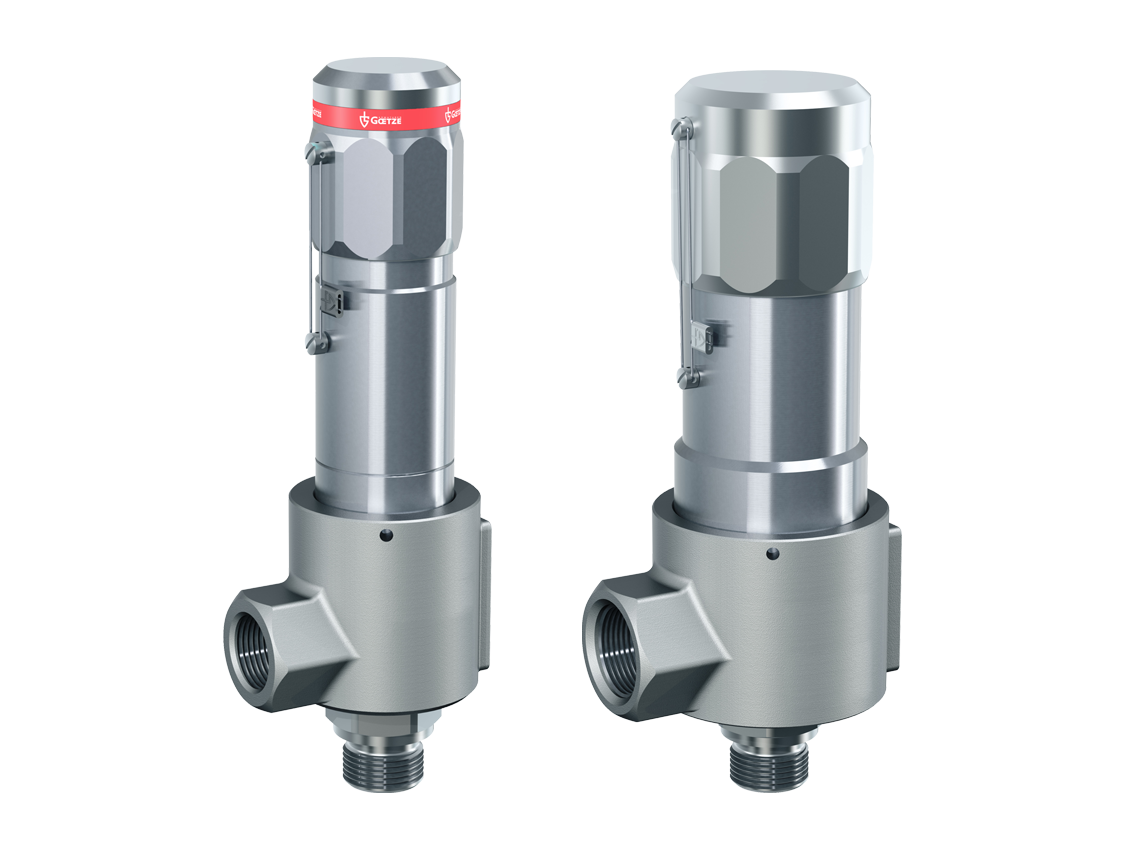
OMB offers the complete range of high-pressure valves such as the solenoid tank valve (ERA 1) with the option of an integrated pressure regulator, the fuel receptacle, remote TPRDs and check-valves. The full range of products are developed in compliance with the major international Standards and Regulations such as EC 79/2009, HGV 3.1. HPRD-1, UL 2267 and IEC 62282.

Historically and currently, enormous amounts of hydrogen are needed for key industrial processes such as the manufacture of artificial fertilizers and steel. New H2 applications such as fuel cell vehicles would further increase future demand. To contribute to the energy transition, this hydrogen needs to be "green" instead of being derived from fossil fuels, i.e. without producing CO2 in the process.
This will require large hydrogen electrolyzers. These consist of several stacks of electrolysis cells. For safe operation, the individual stacks require protection against overpressure with safety valves.
The WITT safety valves AV 619 and AV 919 perfectly match the target pressure and temperature ranges of PEM and Solid Oxide electrolyzers. The opening pressure can be set accurately anywhere in range 5 to 500 mbar. The operating temperature can be anywhere up to 250°C.
Highly precise and reliable, the valves open when the set pressure is reached and safely protect workers and sensitive equipment from overpressure. Despite their small size, the valves allow high flow rates, making them also suitable for large installations.
The valves are available with the elastomers required for hydrogen, including EPDM or FFKM (also known as FFPM). WITT safety relief valves are oil and grease-free, can be installed in any position, and are available with various inlet and outlet connections and in different materials, including stainless steel or aluminum (AV 919). Optionally, WITT offer TÜV Certification of individual valves’ set pressures.

HiP has been in the forefront of providing high pressure valves, fittings and tubing to support our customers as they incorporate hydrogen in their zero-carbon energy strategies. The ongoing build-out of the hydrogen refueling infrastructure necessary to support the fuel cell powered trucks, buses, cars, forklifts and other equipment depends on products designed and built to meet the unique challenges of hydrogen. HiP is a worldwide leader in delivering safe and reliable products to handle the high pressures and extreme temperatures associated with handling hydrogen.
Over the last ten years, HiP has produced tens of thousands of valves and fittings for hydrogen applications. As demand has continued to increase, we have committed the resources to develop a complete line of standard products for use with hydrogen, all either in stock or available with short lead-times. We have engineered our high pressure valve stems, packing and associated soft goods to meet the unique requirements of hydrogen. The standard material for all HiP valve bodies and fittings is 316 stainless steel, which is hydrogen compatible. In addition, we offer a range of special materials such as hastelloy and monel.
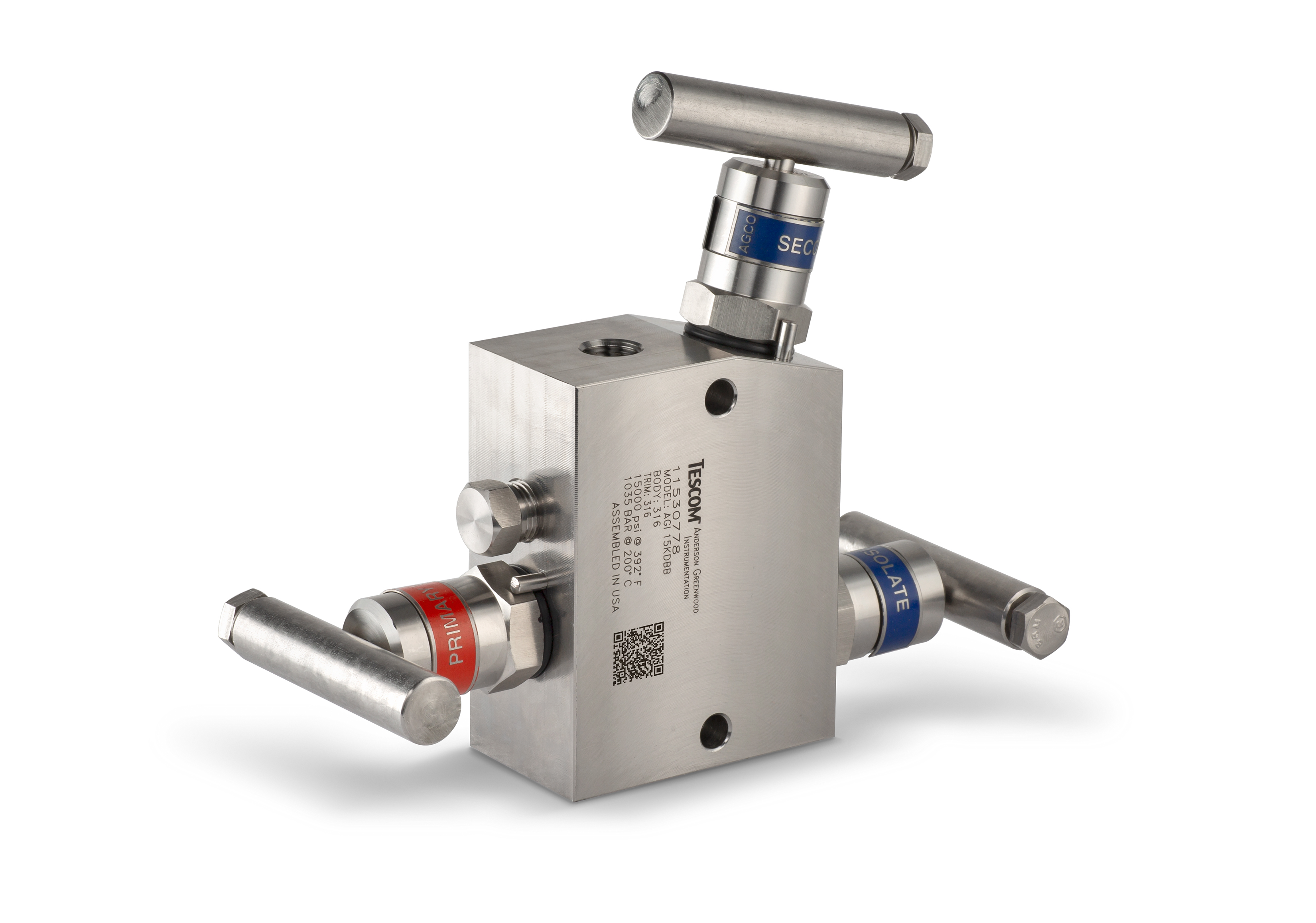
15,000 pounds-per-square-inch double block bleed and hand valves offer redundant protection from high pressure and superior sealing technology to avoid leaks
FLORHAM PARK, N.J. (July 20, 2022) — Emerson has launched the TESCOM™ Anderson Greenwood Instrumentation H2 Valve Series for hydrogen applications up to 15,000 pounds-per-square-inch (psi) (103.4 megapascal (MPa)). The new solution reliably isolates process pressure in high pressure gas applications such as hydrogen fueling stations and tube trailers, reducing fugitive emissions and improving safety.
As it moves from tank to pump, hydrogen is transferred at pressures of up to 15,000 psi (103.4 MPa). To protect personnel and prevent leaks, it must be effectively controlled and isolated. The Double Block Bleed (DBB) valve’s positive double block arrangement provides two layers of positive shutoff that shield maintenance staff from high pressure during instrument maintenance. Its modular design reduces the number of potential leakage points, and the reinforced sealing technology reduces the risk of fuel entering the atmosphere through the valve stem.
Among the cleanest fuels when produced using renewable resources, compressed hydrogen gas is used to power fuel cell electric vehicles (FCEVs). In 2021, 142 new hydrogen refueling stations began operating, the biggest increase in a single year, raising the total to 685 active stations worldwide. And, in January 2022, Global Market Insights Inc. predicted that the FCEV market will exceed $15 billion by 2027. To meet this growth demand, fueling station original equipment manufacturers (OEMs) must source reliable, high-performance components to ensure overall equipment effectiveness and ensure station safety.
“Given the pressures that hydrogen is subject to in these applications, it’s critical that equipment operates safely and reliably, every time. That’s why we’re committed to specifically developing components to help our customers effectively store and precisely control compressed hydrogen gas,” said Rob Lindquist, director of global marketing for TESCOM precision fluid control at Emerson.
The hand-operated, maintenance-free design of the hand valves and double block and bleed valves in the H2 Valve Series minimizes maintenance and downtime. With low operating torque and adjustment-free seal technology, these hand valves deliver a low cost of ownership in a compact solution.
For OEMs looking to safely minimize risks for operators, the H2 Valve Series provides several safety features. Each valve has a convenient QR code, allowing operators to quickly access the valve’s specs during maintenance and installation. The product also ensures that no high-pressure liquid or gas is released during maintenance. The valves are compliant to the ISO 19880-3 hydrogen fueling standard.
With this new 15,000 psi (103.4 MPa) product line, Emerson offers a comprehensive portfolio of TESCOM solutions for safe and precise operation of hydrogen fueling stations.
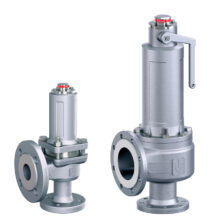
CPC-Cryolab was founded in Florida to support the Space Program and the world’s first commercial size liquid hydrogen plant. The plant was built in Palm Beach County and CPC designed and manufactured all of the valves, filters, piping and transfer connections used in the facility.
In 2000, CIRCOR acquired the Rockwood-Swendeman line of cryogenic safety relief valves from Rockwood Systems of Portland, Maine. This industry valued line of SRV’s helped to further compliment the growing product line CPC-Cryolab has to offer.
At CPC-Cryolab, we strive to provide quality products and solutions to support the ever-growing cryogenic market. We are known as the world leading manufacturer of liquid hydrogen and liquid helium cryogenic components and equipment. We pride ourselves with the largest and most diverse family of products supporting the hydrogen and helium markets with; vacuum jacketed filters, valves, hoses, piping systems, manifolds and transfer connections available in the industry.
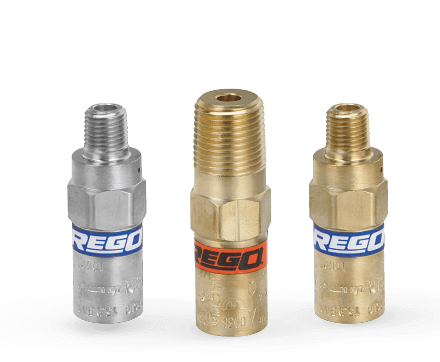
Hydrogen Service’s castings are highly endorsed forRadiographic quality. The joints of Body, Bonnet, Cover and Stuffing box shall have low emission, so it shall be Helium leak tested as per ASME Section V (Detector probe technique)
Brinell hardness shall not exceed 200 BHN for Carbon steel and 225 BHN for Alloy steel. Charpy V notch impact testing is to be done for valve material of CS and AS.
During the construction of hydrogen valves, metals and non-metals must be compatible with hydrogen and must not be vulnerable to hydrogen embrittlement during further processing.

ARKEMA is operating its plant in a non-stop mode requiring a high level of availability of the equipments as utilities devices as compressed air tanks. To allow high availability of its plant, ARKEMA decided to go for LESER’s new Changeover Valves.
The LESER Change-over Valve Type 330 and 320 offers the solution for safe and efficient system availability 24 / 7. It is easy to operate and, in combination with safety valves, provides permanent protection for a permanently running system.
With the help of flow tests and CFD simulations (Computational Fluid Dynamics), a flow-optimized design with minimal pressure loss was developed. Each configuration of these change-over valves has a specified resistance coefficient that enables reliable and precise calculation of the inlet loss. Due to their durable construction, these change-over valves are maintenance-free and lavishly tested. They are the economical solution because an optimal selection can be made for every application.
ARKEMA is one of the leading hydrogen peroxide producers in the world. Hydrogen peroxide (H2O2) is used in different concentrations as example for food packaging sterilization. The plant in Shanghai was established in 2000, and expanded in 2008.
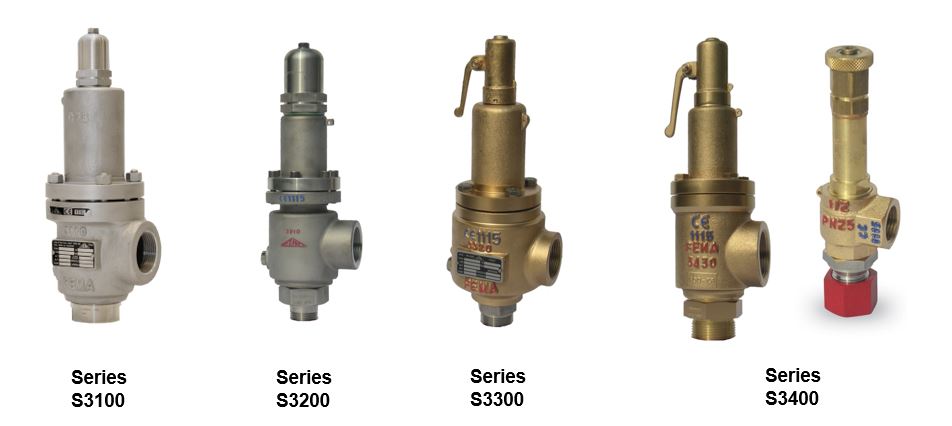
Designed to reduce contaminants in high-purity applications using hydrogen and methane gas, these valves have a stainless steel and brass body with a smooth finish to reduce dust collection and internal components designed to protect the seal and diaphragm from contamination. They’re often used in research sample systems, emission monitoring systems, and chromatography. Valves automatically reduce a high inlet pressure from compressed gas tanks to a lower, stable outlet pressure. All have Compressed Gas Association (CGA) numbered inlet fittings for secure connections to compressed gas tanks. Choose a valve with the same CGA number as your tank and other system components. Outlet fittings are Swagelok® for a leak-free seal around hard metal tubing in high-pressure lines. Also known as instrumentation fittings, Swagelok® fittings are compatible with Parker A-Lok, Gyrolok, Bilok, and Tylok fittings. Valves come with a gauge to monitor outlet pressure and a gauge to monitor inlet pressure from the tank.
Choose a valve with a maximum outlet pressure that’s approximately twice your application’s normal operating pressure. Your operating pressure should never exceed 75% of the valve’s maximum outlet pressure.
Single-stage valves reduce pressure in one step, which causes the outlet pressure to fluctuate slightly as you empty the tank. They’re best for applications where a constant outlet pressure isn’t critical.
Two-stage valves progressively reduce pressure over two steps for more consistent outlet pressure at all times. They’re often used in applications that require a constant outlet pressure regardless of the tank level.

Industry leading pressure and safety relief valve designs with over 140 years of technical and application expertise providing custom engineered solutions for O&G, Refining, Chemical, Petrochemical, Process and Power applications. Our designs meet global and local codes and standards (API 526; ASME Section I, IV & VIII; EN ISO 4126; PED & more). Gain insight into the performance of your pressure relief valves with wireless monitoring.

As a Japanese leading valve manufacturer for Hydrogen Fuel Cell Application, Hamai has developed valves for FCVs with world’s major automobile manufacturer. Being recognized with high R&D capabilities, Hamai’s valves have been installed to the first FCV in Japan. Not only for automobile & trucks, but Hamai also aims to expand the business to any types of mobilities such as railroad, aircraft, and construction machinery.
Hamai has developed full lineup of 700bar valves which includes On-tank solenoid valve, PRD’s, and Receptacles. Highly reliable for usage of light duty, heavy duty and storage systems.
Hamai, with a design concept of “Safety is always our top priority”, develops high quality products with excellent durability and stability. Our valves for hydrogen are manufactured in Japan, a country which possess high processing technology and rigorous quality control.
Hamai supports customers around the world by developing and supplying valves for hydrogen fuel that contributes to the world’s energy and environmental problems.




 8613371530291
8613371530291